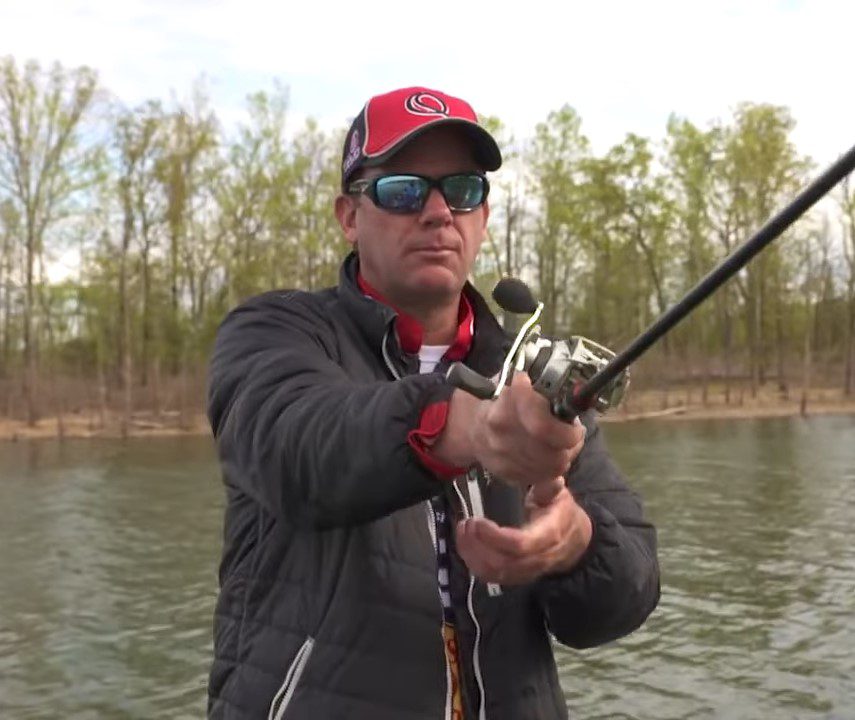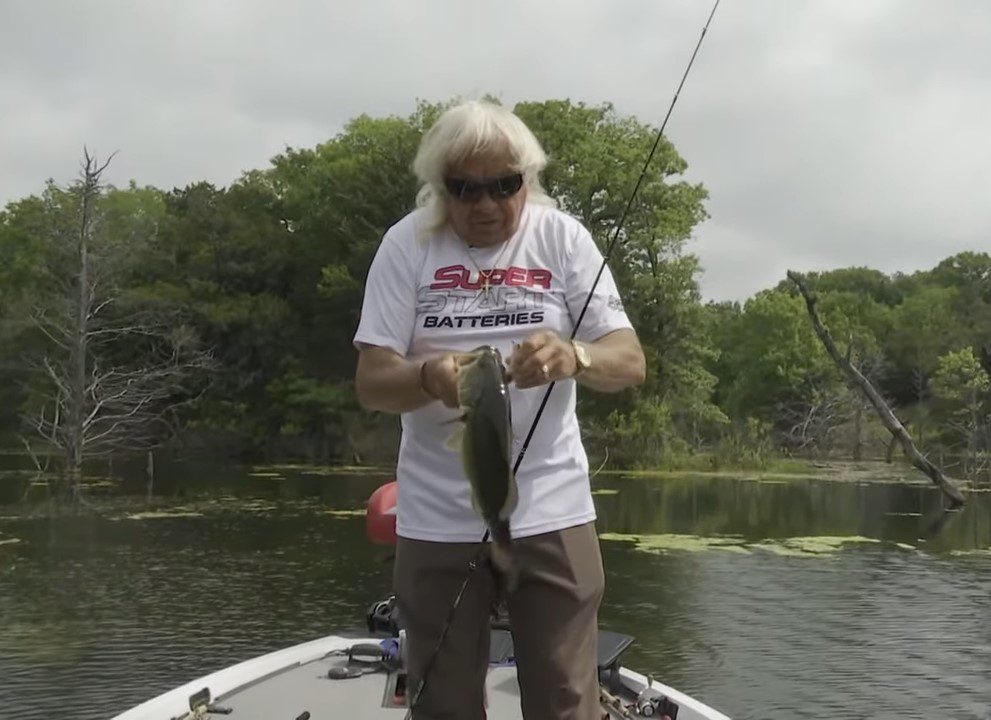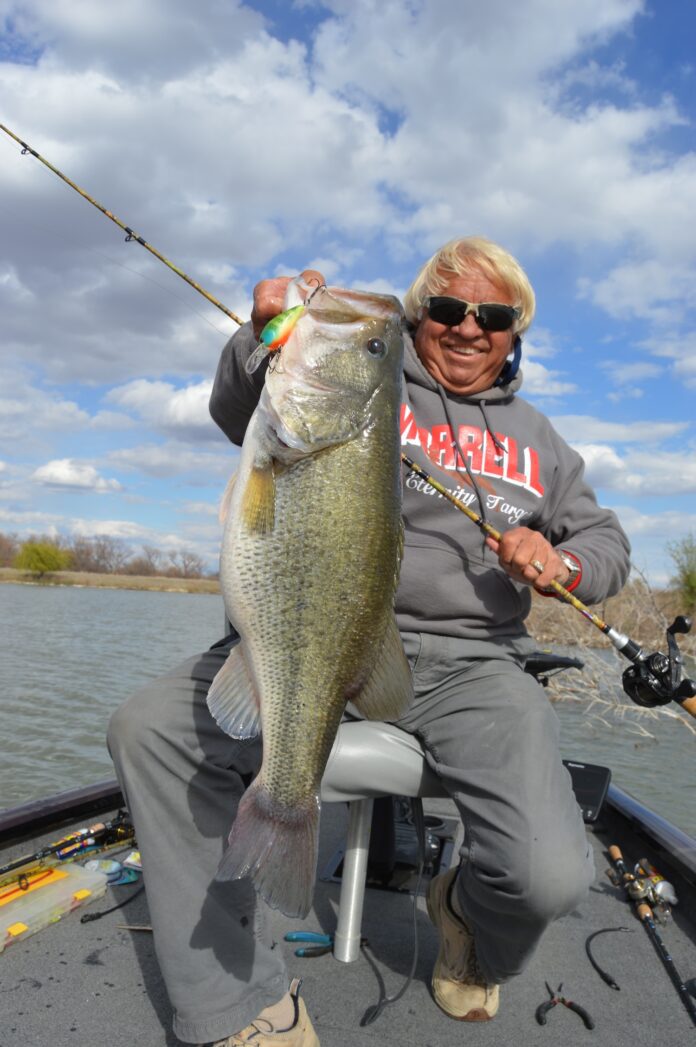With the Spring Comes the Spawn!
Anglers across the nation are eagerly awaiting spring. The closer it gets to spring, the closer we are to the spawn. It’s every angler’s most eagerly awaited event of the year. Suddenly, boats are towed around town for no particular reason, swimming pools become testing grounds, and credit cards get maxed out. Kids can’t wait for Christmas, parents can’t wait for school to start, and anglers can’t wait for the spawn. Start saving your vacation because the mystical and magical spawn is upon us.

Prespawn Magic
No one is better at catching pre-spawn bass than the magician known as Kevin VanDam. This time of year, KVD throws swim baits near banks that bass move up on during the spawn. The conditions he finds best suited for the swim bait during the late pre-spawn, are when the water is warming and the wind is blowing in. This time of year, schools of baitfish are in the shallows, so a swimbait is lethal on marauding bass. He keeps his boat 12 to 15 feet from the bank and throws it into four or five feet of water. His goal is to find if bass are on points, if they are further down looking for pockets, or if they are on rocky transitions. The swim bait lets him cover a lot of water while he searches for what area bass prefer that day.
The key to fishing the swimbait this time of year is to cover a lot of water at the right depth. KVD prefers to control the depth of the swimbait with his set-up rather than with weight. For instance, a shaky tail swimbait with a quarter-ounce shaky head is a good start. When you combine this with a 12-pound fluorocarbon line, a seven-and-a-half-foot medium-heavy action rod, and slow gear ratio reel, the combination is deadly. The seven-and-a-half-foot rod helps make long casts and lets you pull a lot of line when you set the hook on a big bass hitting the bait coming at you.
KVD recommends you use line size to keep the swimbait in the proper water column rather than heavier, shaky heads. A heavier, shaky head can prevent the swim bait from looking natural when coming through the water. You are better off using an eight to ten-pound test line with the same size shaky head if you want to run deeper and a 14 to 17-pound test if you want to run shallower. The key is to find the depth at which fish are hitting that day.

Hooking Up With the Big Female During the Spawn
The excitement of the spawn is in full swing down south. When you think of the spawn in South Florida, you think of the legend Roland Martin. Of course, you know he is catching big bass during the spawn, but what is his go-to bait? Roland is not shy about sharing his love for the #297 green pumpkin Senko. In fact, it’s his go-to spawn rig no matter where he is fishing. He uses a 20-pound fluorocarbon leader on a 30-pound braid to make the long casts required when fishing the spawn. If the bite is light, try a 12-pound fluorocarbon with no weight, and barely skin hook the Senko. This is often just the trick you need to get suspicious bass to bite.
His advice is that you have to be in stealth mode when fishing the spawn. He trolls in slow motion around bedding areas, looking for fish on beds. When he sees an area full of beds, he will power pole down as gently as possible. When fishing the spawn, don’t let rock the boat. He stays as far away from the beds as he can. Many anglers like to be as close to the bed as possible, but Roland is not a fan. He would rather stay as quiet and far away from beds as possible.
His go-to technique is to work the Senko over the bed. It’s generally not a problem to get the smaller male to bite, as it’s the bed’s protector. As water temperature rises, the bigger females get more active. If he catches the male on a bed, Roland marks where he caught the fish. He will then throw right back to the same area, hoping the females are left behind to protect the bed. A great strategy for a hook-up with a big female bass.

Wobble With It During Post-spawn
Legendary fisherman Jimmy Houston wants you to know that just because the spawn is over doesn’t mean the spring bite is over. During the post-spawn, largemouth fry will move to a deeper structure not far from the bank. They especially like to hide in trees and brush while the male stands guard. Jimmy points out that these male bass take their jobs seriously and are ready to attack intruders. You may still bring in a hungry female during the post-spawn, but you will catch many more males than females.
Jimmy uses a wake bait during the post-spawn, and the bite is magical. He likes to find calm water with trees just off the bank. His strategy is to toss the wake bait near the trees. He lets the bait sit until the wake from the entry is calm. Male bass will often hit the bait before the water calms. He keeps his rod tip high as he reels down the slack. He then gives the wake bait a couple of twitches and then starts the retrieve. The bait will wobble during the retrieve, creating a wake that the bass can’t stand. This post-spawn wobble strategy will soon fill your boat!
Let the Fun Begin
Every angler has waited for the spring to get here. It’s here, and now it’s time to “git bit.” Remember, not all bass spawn at the exact same time. While some bass may be in pre-spawn, others may be spawning, and others are already in post-spawn. You can stop driving around with your boat in tow, stop testing lures in the pool, and pay your credit cards off because these three methods prepare you for any spawn phase. So, call your fishing buddies, buy your license, and gas up the boat. That mystical and magical time of the year, known as the spawn, is calling your name. It’s time for you to answer the call and head to the lake.


